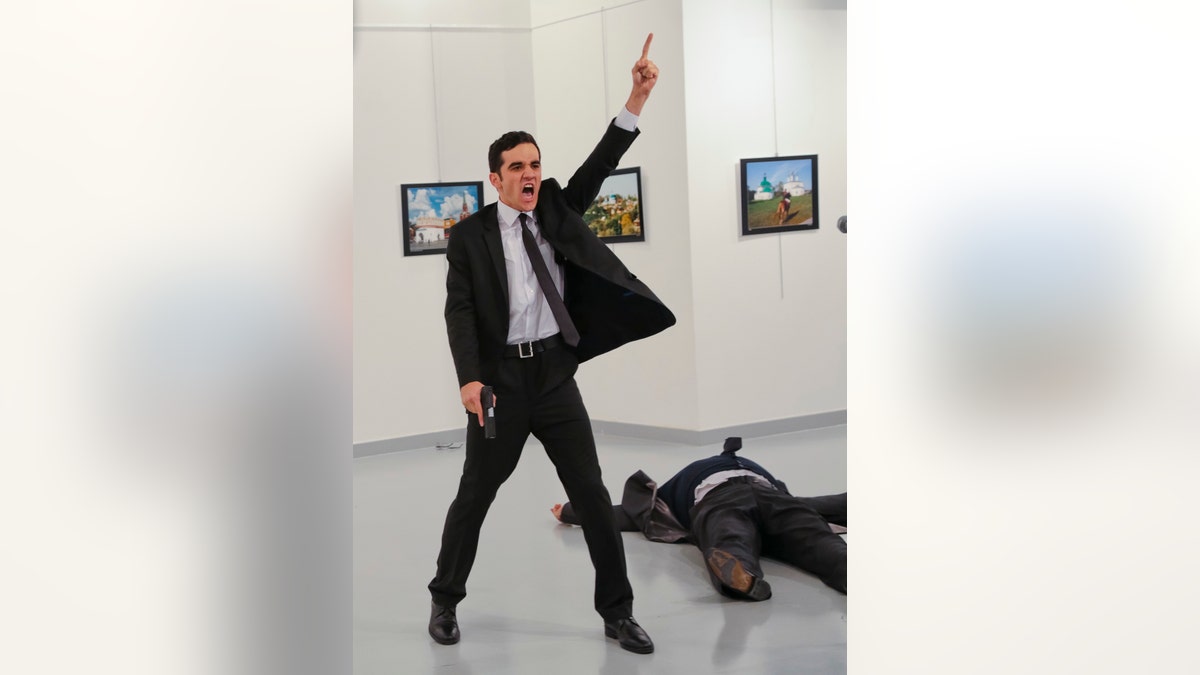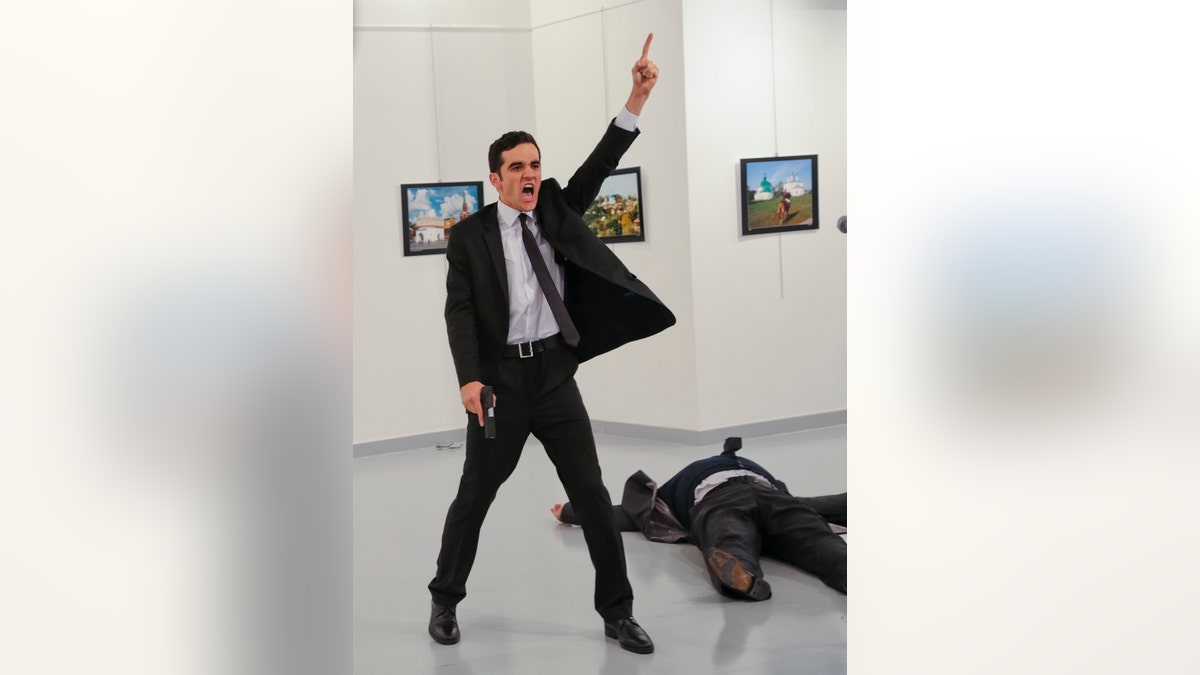
A gunman gestures after shooting the Russian Ambassador to Turkey, Andrei Karlov, at a photo gallery in Ankara, Turkey, on Dec. 19, 2016. (AP Photo/Burhan Ozbilici)
The photographer who took the haunting picture of the Turkish assassin standing next to the sprawled out body of a Russian ambassador recalled the chaotic shooting and how he was not even assigned to attend the gallery opening in Turkey’s capital.
“I decided to attend simply because it was on my way home from the Ankara office,” Burhan Ozbilici, the photographer for The Associated Press, wrote in a first-person essay Tuesday.
But the photograph Ozbilici took Monday of Mevlut Mert Altintas and the dead ambassador landed on the front pages of major newspapers across the world, including The New York Times, The Wall Street Journal and New York Post.
The picture was as brutal as it was simple: Altintas, 22, a Turkish policeman, is seen in a dark suit holding a gun and yelling. The body of Andrei Karlov, his target and the Russian ambassador to Turkey, is seen on the floor. Everything is white and sterile: the walls, the floor. There is no trace of blood.
“Don’t forget Aleppo, Don’t forget Aleppo. Those who have a part in this atrocity will all pay for it, one by one,” he yelled, it was later reported.

An unnamed gunman gestures after shooting the Russian Ambassador to Turkey, Andrei Karlov, at a photo gallery in Ankara, Turkey, Monday, Dec. 19, 2016. A gunman opened fire on Russia's ambassador to Turkey at a photo exhibition on Monday. The Russian foreign ministry spokeswoman said he was hospitalized with a gunshot wound. (AP Photo/Burhan Ozbilici)
Video from before the shooting shows Altintas lurking behind Karlov in front of the new exhibit called “From Kainingrad to Kamchatka, from the eyes of travelers." Altintas appeared calm and -- while Karlov spoke -- stepped off to the right. Altintas was still in the frame when he reached into his suit jacket and pulled out a small gun.
He opened fire. Karlov was hit several times and fell. The horrified audience ran for their lives; some found refuge behind nearby columns and others lunged behind tables. Ozbilici, however, managed to take pictures of the killer and disregarded the old adage: If you can shoot him, he can shoot you.
“This is what I was thinking: “I’m here. Even if I get hit and injured, or killed, I’m a journalist. I have to do my work. I could run away without making any photos … But I wouldn’t have a proper answer if people later ask me: “Why didn’t you take pictures?”
While newsrooms across the country have cut back budgets on photo desks, photojournalists have played pivotal roles in conflicts ranging from Iraq to Syria.
Matthew McDermott, a photojournalist for more than 20 years who covered the Sept. 11 attacks and the 2005 earthquake in Haiti, said photojournalists often have one thing in common: they are adrenaline junkies.
“You’re in this moment,” McDermott said, “and you know there’s a chance for bodily harm, but that’s all secondary. You’re there to take the shot.”
McDermott said photojournalists are also often pressured by their editors to come up with the picture.
“If you’re bosses know you were there, you better not let someone beat you,” he said.
Rick Shaw, the director of Picture of the Year International, told FoxNews.com that Ozbilici's photograph was outstanding.
“Photojournalism is a balance between photography as an art form and journalism, which is content-related,” he said. “Any photograph that reaches the highest level for both is an exceptional picture.”
Shaw went on to say that individual news organizations often will identify at what point a photographer stops covering an event, but said during breaking news, the decision is ultimately up to the photographer.
“Conflict photojournalists are in this situation two to three times a day,” he said. “But it’s not until something like this happens that we are awakened to these photographers’ responsibility and danger.”




















